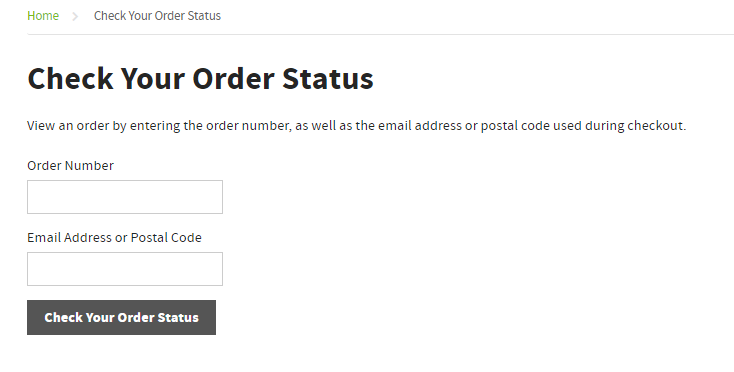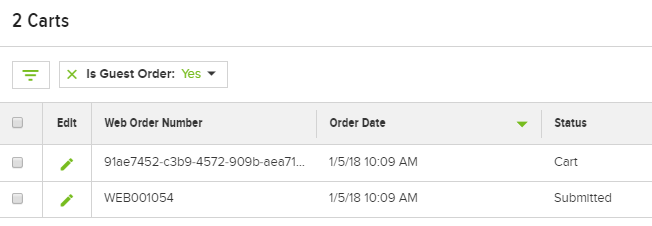Manage guests
Describes how to manage guests on your website in Optimizely Configured Commerce.
Guest access on the website
Administrators can configure Optimizely Configured Commerce websites to allow for unregistered users or guests to access or checkout from websites. The process of enabling this functionality involves just a few clicks, but you must decide if guest access or checkout is the right strategy for the website. There are a number of factors to consider when making this decision and the rationale and conclusions are not the same for every website.
To start, there is a common belief that enabling guest access or guest checkout will increase the number of transactions on a site, as customers can avoid the minor hassle of creating accounts. Although this can be true, there are also some potential downsides to allowing guests to checkout from a site without registering. So when making the decision to allow or not allow guests and guest checkout, consider the following points:
- Returns, exchanges, or refunds can become more complicated without an associated account.
- Allowing guests can make reviewing, modifying, or tracking orders more difficult.
- Guests will not have the option to reorder previous orders or make use of wishlists.
- Guests do not have any history, so there is a loss of data which could help drive future sales, possible training, or other opportunities.
Guest user experience
Configured Commerce administrators can choose to allow Guest Users to access and place orders on the commerce site. Guest Users are users unconnected to an existing user or customer account, and commonly are either one-off site visitors, or new site visitors who have not yet set up an account.
Provide guest access
Before allowing users to check out as guests on the commerce site, several settings should be considered. View the Working with Guest Access article to learn more about setting up the Guest User experience.
Guest user permissions
Guest users are assigned the Guest user role. While not an official role, this does provide the Guest user with a specific set of permissions. Guest users may place orders without approval, and may access the My Account menu to view their Recent Orders, Recently Purchased items, and Order History. The guest user's session expires after a period of time (as set in the session cookie) or after they go away from the website.
Guest user experience workflow
A guest user who accesses the website and places an order completes the following steps:
-
User accesses the website.
-
User uses the site hierarchy or search bar to browse/search for products.
-
User adds one or more products to their cart.
-
User goes to cart.
-
User selects Checkout.
-
User is prompted to sign in.
-
User selects Checkout As Guest, or user may choose to Create Account.
-
If user elects to Checkout as Guest, user enters their Billing and Shipping information.
-
User clicks Continue.
-
On Payment page, user selects Carrier and Service, then enters Credit Card payment details.
-
User may select to Use billing address, or may uncheck the checkbox to enter a Credit Card billing address.
-
User selects Place Order. User is provided the option to Create Account.

-
User receives an order confirmation, sent to the email address they entered on the Billing and Shipping page.
-
User selects Check Order Status in the email to see the status of their order.
Order status page
If a Guest User chooses to check their order status, they are redirected to the Order Status page, accessible at website.com/orderstatus.
NoteThe Order Status page does not appear until the website's theme is updated. A certified Configured Commerce developer should compare the existing code with the code in Optimizely's git repo, and copy over the necessary code.

The user enters the Order Number, as well as the email address or postal code used during checkout, and selects Check Your Order Status. The user then sees a copy of their placed order, including the current status.
Managing guest users
Customer Service Representatives or other console users who manage website user information have a few options to manage guest users.
-
Console users may look up guest orders by going to Sales > Order History in the Admin Console, then selecting the Is Guest Order filter. The order has the same options as a standard customer order.
-
Console users may look up guest carts by going to Sales > Cart History in the Admin Console, then selecting the Is Guest Order filter.

-
Console users may access guest user accounts by going to Administration > Website Users and selecting Show Guest Users. Guest users are assigned a string of characters (ex. 03c5d323-07e5-410c-b1-a5116287510d) as their username. This name can be modified by accessing the user's Details tab. On the Details tab, guest users are noted by the Is Guest field (values: Yes or No). This field is system-generated, and cannot be modified.
Updated 4 months ago